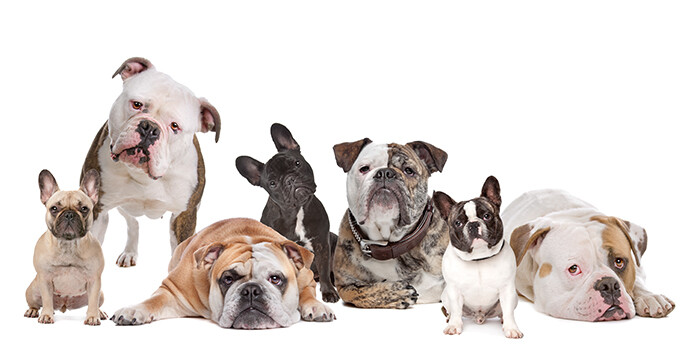
Bulldog Varieties
The history of bulldogs dates back to antiquity, although there is much debate as to their actual beginnings. What most historians can agree on is that the modern bulldog breeds descend from either (or both) Bull and Mastiff type dogs. Both types of dogs, as well as future generations, were bred for their tenacious skills in warfare, herding, and protection. Their broad bodies, stout faces, muscular physique, and vice-like grip made them ideal for these purposes.
However, as laws in the 19th century banned sports such as bull-baiting for English Bulldogs, and the need for dogs on the battleground ceased, Bulldogs were bred for domestic purposes such as home guard dogs, and more commonly Fido, that cuddly fella who just wants to fall asleep and drool on your leg.
Bulldogs have a long and storied past which has brought us several of the most loveable breeds of dogs on our planet.
What many people don’t realize is that there are dozens of breeds of bulldogs, however many (such as several terrier and molosser breeds) don’t go by the name bulldog. For this reason, we will simply talk about the 14 “bulldog-named” breeds.
American Bulldog
American Bulldogs are relatively new to the scene, and despite their aggressive appearance – the typical broad and muscular bulldog – this breed has a mild and stable temperament as well as infallible loyalty. These dogs are medium size, curious, alert, and literally fearless.
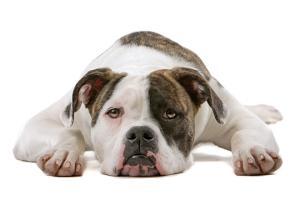
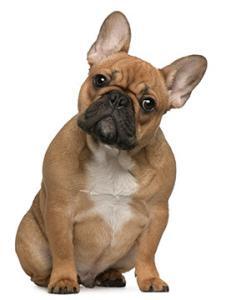
French Bulldog
Yup, you know exactly who these little guys are. In fact, if you haven’t seen one of these tiny dogs on a leash held by a 6’5” 300 lb. man then you just haven’t been looking. Don’t let their compact exterior fool you, these dogs are muscular and intelligent. They are beloved for their miniature size, bat-like appearance, and seriously who just doesn’t go, “aaawwww…” when you see one.
Curiously, French Bulldogs may appear to be a more modern domesticated breed, however their ancestry is wildly debated, from 18th century France to ancient China, and even the Mayan’s of ancient Peru have a very similar breed of dog found mummified among human remains.
Alapaha Blue Blood Bulldog
The Alapaha is one of the most interesting breeds of bulldog. Frankly, no one knows about where they came from, and as of today it is estimated that only 120 “true blue blood Alapaha’s exist. Why don’t we know where they came from? Well, it seems each breeder has their own version of the dogs’ provenance – and those stories are wildly varied.
However, what we can conclude through historical documents and photos is that these dogs were once apprised as a guard dog in one the United States most controversial histories – slavery and the southern plantations. Their muscular build, and unique agile athletic abilities made these dogs good guard and hunting dogs throughout the south.
Uniquely, these dogs have a charming nature and tend to keep a cool head. They seemingly weigh their options in an effort to not be aggressive and find reason to not fight, unless the circumstance is extremely serious. However, they are extremely loyal and would not hesitate to protect their family or other companion dogs.
There are currently several breeders working to build the population and grow the awareness of these dogs.
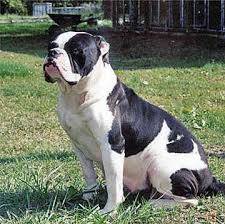
Photo Courtesy Of: Link
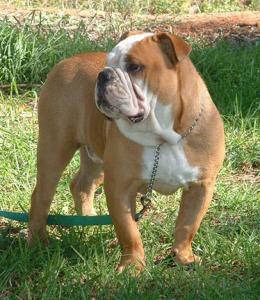
Photo Courtesy Of: Link
Aussie Bulldog
Wide-set eyes, wide and deep muzzle, and the muscular appearance known to bulldogs, the Australian bulldog was bred specifically for the harsh and hot Australian lifestyle. Australian Bulldogs have a loving temperament much like their counterpart in the States, however, they are more muscular with unending stamina.
Aussie Bulldogs are a later breed, less than 15 generations old and mixed with intent of holding onto the temperament of American Bulldogs and the strength and stamina of molosser and terrier breeds.
These dogs are great companions, and excellent guard dogs.
Catahoula Bulldog
The Catahoula Bulldog is a mix between an American Bulldog and Catahoula Leopard dog. You can consider this breed a robo-cop type invention that has a history over 100 years. The American Bulldog provides strength with a laid back temperament. The Catahoula Leopard dog provides intelligence, speed endurance, and natural hunting skills.
This breed was developed to help cattle ranchers heard and protect cattle, as well as provide a strong hog-hunter. The end result is a warrior with a highly-intelligent, loyal and loving disposition.
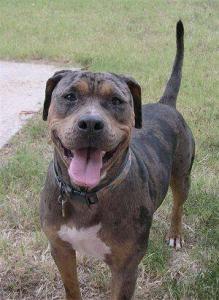
Photo Courtesy Of: Link
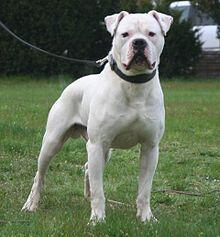
Photo Courtesy Of: Link
Olde English Bulldog
Despite its name, the Olde English Bulldog is not an old breed. In 1971 a man named David Leavitt wanted to recreate a new breed of dog that resembled the physical abilities of a classical bull-baiting English Bulldog from hundreds of years ago, with the temperament of a modern English Bulldog.
Using old photographs, statues, and sketches Leavitt seemingly achieved his goal breeding a larger and more athletic version of a modern English Bulldog. As he describes, these dogs are, “Courageous and determined, without being overly aggressive.”
Leavitt has since moved on to breeding a new breed of bulldog, however, not before ensuring the Olde English Bulldog was set up for a long future among other breeders.
Victorian Bulldog
Another recreated breed, the Victorian Bulldog was bred in the 1970’s and 1980’s to resemble an older breed of domesticated Victorian Bulldogs that have since gone extinct through mixed breeding. A man named Ken Mollet studied Victorian paintings, statues, written descriptions, and photographs to determine exactly what kind of dog he wanted to breed.
The end result is a fit and healthy dog, slightly bigger than an English Bulldog, who is quiet playful and loyal.
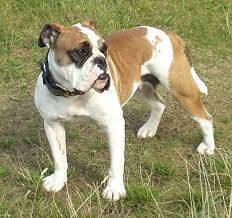
Photo Courtesy Of: Link

Photo Courtesy Of: Link
Campeiro Bulldog
The Campeiro Bulldog is one of the few remaining natural descendants of the English Bulldog. They were initially brought to Brazil in the 16th century and have since been steady work dogs. They are strong, brave, overwhelming loyal to their owners and obedient.
Maintaining much of the original stature and temperament of their ancestors, these dogs can be more reserved with strangers unlike many other bulldog breeds which have little reservation with strangers.
These dogs are strong, agile, and athletic while maintaining a calm and watchful temperament well suited as guard dogs for families and herds.
Dorset Olde Tyme Bulldog
In the late 1980’s Steve Barnett set out to develop a breed of bulldog proudly sought after by the Tudors for their athleticism, strength, and performance in bull-baiting. His goal was to develop a dog that emphasized national spirit and pride.
After several generations of breeding the Dorset Olde Tyme Bulldog has become an affectionate and loyal dog, with a strong sense of loyalty and companionship. They are strong, and while having similar facial features similar to most bulldogs, they are also long and sleek which allows for agility and endurance.
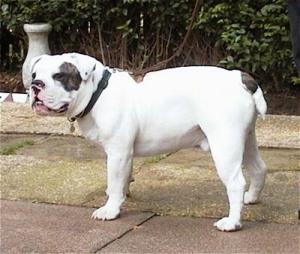
Photo Courtesy Of: Link
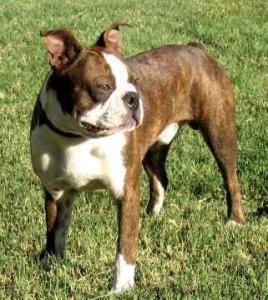
Photo Courtesy Of: Link
Olde Boston Bulldog
Developed in the 1800’s as a cross between an English Bulldog and a Bull Terrier, with a purpose of pit-fighting.
This mixed produced two styles of Olde Boston Bulldog – the stout and broad face and a longer and slender style. Through breeding in the early 20th century the Boston Terrier also resulted, which has little resemblance to the original Olde Boston Bulldog.
While much of the aggression has been bred out of the dogs, they still do have the ability to fight but are dominantly loyal and friendly.
Ca de Bou Bulldog
The Ca de Bou has one of the longest ancestries dating back to 1000 BC or longer. There is wide speculation on the exact ancestry. Some believe these dogs are direct descendants of the last of a breed from the last two Mallorquin centuries ago, while others believe the dog is a recreation of an extinct breed.
As with any ancient breed the controversy will go on. However, there is little doubt that Cade Bou descend from the stature of a Mastiff and many believe were originally traded among Ancient Egypt and the Roman Empire.
The Ca de Bou are one of the most adaptable bulldogs and will thrive both in and outdoors. They are mild tempered, laid back, and loyal to family, with a friendly curiosity. Despite their medium stature, they have the presence of a much larger dog.

Photo Courtesy Of: Link
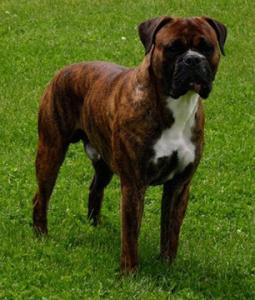
Photo Courtesy Of: Link
Valley Bulldog
The Valley Bulldog has one of the least known histories. Popular in Canada’s Nova Scotia, the dog is said to have first been bred in mid-20th century as a work dog, mixing a boxer for its strength and athleticism and a Bulldog for its temperament and unwavering loyalty. However, many argue that the dog has existed much longer, and possibly back to the 19th century.
Regardless, the Valley Bulldog is low in numbers, but widely popular around Nova Scotia. They are taller and sleeker than an English Bulldog, and short and broader than a boxer.
Banter Bulldogge
The goal in breeding a Banter Bulldogge was in recreating the Brabanter Bullenbeiser of the 1700’s. The dog captures is strength from its mastiff side and yet, as its name describes has a laughingly funny wit. He’s kind of the comedian with big muscles. You want to laugh, but don’t want to offend.
However, despite their size, these dogs have a great temperament, and are obedient to their masters and accepting of strangers. However, they are intelligent enough to be good guard dogs, and without the quiet disposition of many bulldogs, Banter Bulldogge’s will bark to alert family, or scare away strangers.
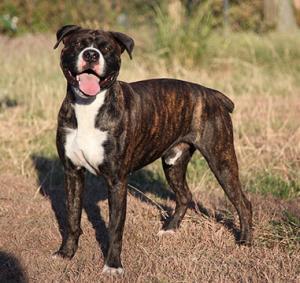
Photo Courtesy Of: Link
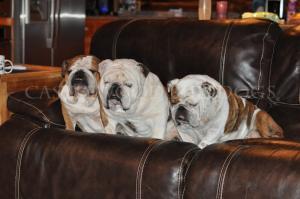
English Bulldog
Okay, so here we are. Who doesn’t love our cuddly, body-noisy, and cute English Bulldogs. If you are a fan of our blog, then you know all the ins and outs of our stout and playful companions. Few dogs have the temperament of a modern English Bulldog, and as you can see, in the last four decades many breeders mix English Bulldogs specifically to draw out the laid back and friendly attitude.
English Bulldogs started with an aggressive ancestry and have been successfully bred into the charming dog you know today. Great for families and as a companion, however, not the agile or endurance dog of other breeds.






